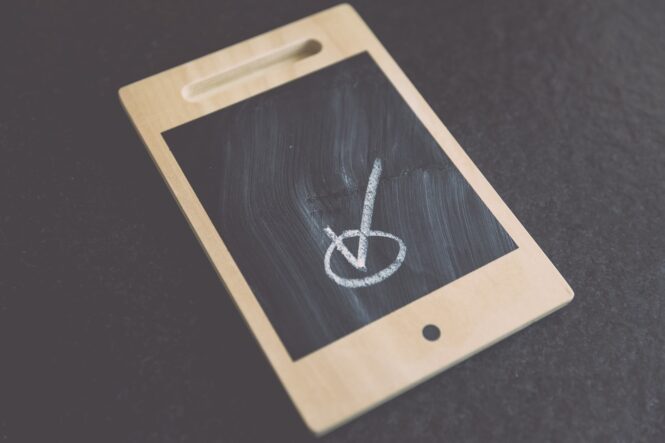Bulk SMS marketing has been making a major comeback largely due to the boom in mobile phone usage with almost 100% user penetration in the U.S., Canada, Australia, and the UK.
Businesses will typically use a short message service (SMS) channel because it allows them to take advantage of high open and response rates along with giving them the ability to generate leads that tend to be of higher quality than other mediums available today.
One area where business owners and marketers still drop the ball is sending their traffic from their bulk SMS campaigns to landing pages that are correctly optimized for mobile phones.
In this article, I’ll share with you the 11-point mobile page checklist that my team and I use at SMSpapa.com.au every time we launch a bulk text messaging campaign to ensure that we get the maximum number of conversions.

-
Above The Fold
Ensure that your primary action remains above the fold (meaning it’s the first thing they see when they hit your landing page). This is more important for lead generation style pages like lead magnets, tripwires, webinar registrations, etc.
Pretend that if a user was to never scroll down past the first part of the landing page, are they actually able to complete the action you want them to take?
If they can’t then you need to keep working at it.
Keep your main call to action, your major sales points/value proposition, etc. in plain sight.
-
Single Column Design
A two-column design can be too small to read – remember that people are clicking to your landing page from the SMS message you sent them so make sure that landing page is a single column.
The average mobile user expects everything to be laid out properly, the more they need to work for the information they require, the more likely they are to click the back button and go elsewhere.
If this is a page that you’re optimizing for SEO this is a demotion which if it happens enough times will see you page moving down in the rankings.

-
Sticky Headers and Footers
Where it makes sense, keep your call to action visible at all times by making your header or footer stick in place as the user scrolls along the page.
Be sure to test this on multiple mobile browsers to make sure it is moving down the page properly and not displaying weird buggy behaviour.
-
Button Placement Within Thumbs Reach
Screen size varies by device, keep that in mind when building your landing page. The goal is to make sure the button is easily reached without accidentally hitting any other elements around it.
It’s essential that you do not have elements that are too close together.
Again, this is not good for SEO either.
-
SMS Mobile Optimized Copy
Longer style promotions can be an engagement challenge on mobile devices. Do your best to break up big paragraphs with images, graphics or text-decoration. Eliminate copy that isn’t necessary on the page, keep it short and focused as much as possible.
The best strategy for mobile copy is to keep paragraphs very short, this increases the speed of the reader and helps them get through long-form copy easier.
If your copy is in large paragraph boxes it’ll look like hard work and will likely compel the reader to bounce from the page.

-
Mobile Optimized Visuals
Mobile users are quick to bounce from slow-loading pages so be sure to keep the number of images on the page to a minimum, keeping in mind that every image slows down your load time.
- Use Vector images (.eps) for responsive design
- Raster images (.gif, .jpg, .png) are less auto-responsive, but deliver better results for photographic images
Use online tools to crush the images down as much as possible and only use them where absolutely necessary.
Mobile users tend to be quite impatient and will not hang around waiting for fancy gifs to load.
-
Optimize Navigation
Make it simple for users to find what they are looking for. A condensed “hamburger” navigation is easily recognized and is a great way to display your menus.
Eliminate all unnecessary form fields. The majority of cart abandons are caused by form fields that create friction points (e.g. Confirm Email Address)
If you are collecting email addresses use a one-click email sign-up tool or use a “log in with your social media account” plugins so people don’t have to type in multiple fields on a small screen.

-
High Contrast Colours
Mobile devices are used in all types of settings, in natural light at the beach, artificial light at the doctor’s office, the darkness. Using high contrast colors in your design will make the user experience easier in harsh or bright lighting.
-
Test Final Page on Multiple Devices
You don’t need multiple devices to test how your site will respond. Simply open your landing page in google chrome, right-click and select “inspect” from the drop down. In the top left corner, you’ll be able to select a device you’d like to view your pages on.
-
Check Page Load Time
Open www.gtmetrix.com and copy and paste your landing page URL.
- Reduce load time by:
- Remove unnecessary scripts
- Remove unnecessary redirects
- Minimize image file size
- Host your site properly (dedicated server is best)
- Reduce the number of plugins used

-
Create A Schedule For Re-Checking
The reality is, things break. Make a habit of checking your landing pages regularly to make sure your users are getting the best experience possible.
There have been so many times where I’ve set up a landing page for my bulk SMS campaigns and I’ve gone through the testing and everything is fine
Conclusion
There you have it; this is the same 11-point checklist I follow whenever I need to create a mobile landing page either for myself or my clients.
Use this as a framework when building your next page and watch your conversions skyrocket!
 Imagup General Magazine 2024
Imagup General Magazine 2024



